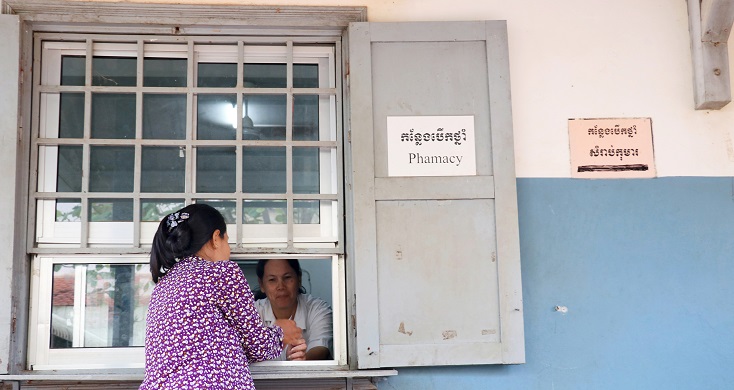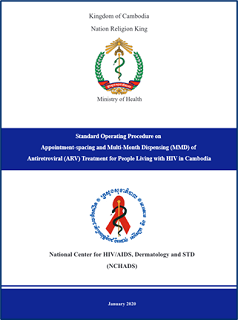To evaluate the performance of this new approach, in 2019, the USAID Global Health Supply Chain Program-Procurement and Supply Management (GHSC-PSM) project alongside NCHADS conducted a rapid assessment in four provinces, finding that ARV appointment spacing techniques were already implemented at some sites, but not all. The project followed up by providing support and guidance to these health facility sites to ensure that they had the capacity and stock to achieve the target of five to six months of ARV spacing. Based on the results, GHSC-PSM recommended the development of MMD Standard Operation Procedures (SOP).
GHSC-PSM then partnered with the U.S. Center for Disease Control and Prevention (CDC) and other stakeholders, including LINKAGES and CHAI, to develop the SOPs and accompanying materials. GHSC-PSM alongside in-country partners designed job aides for ARV appointment-spacing and the MMD SOP in both English and Khmer. NCHADS approved and endorsed the documents in January 2020.
Thanks to the hard work of GHSC-PSM in Cambodia and partners, by September 2020, all 69 ART sites were conducting onsite orientations and workshops dedicated to scaling up MMD and disseminating the SOP.
By June 2020, 58 percent of patients at PEPFAR-supported sites received MMD. With the MMD ARV delivery model, service efficiency increases and decreases congestion at health facilities by reducing clients' time traveling to facilities and reducing patient wait times. Through the development and roll-out of the MMD SOP, Cambodia and NCHADs have bettered the care and treatment of people living with HIV.

